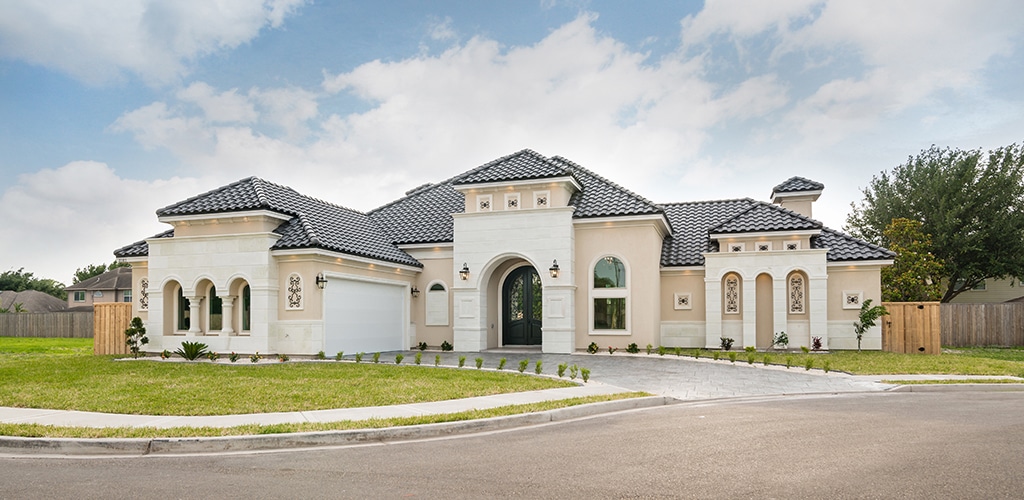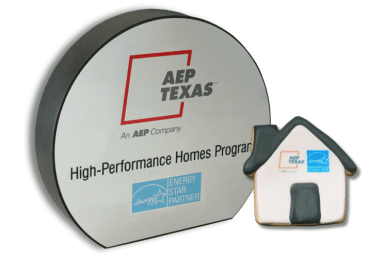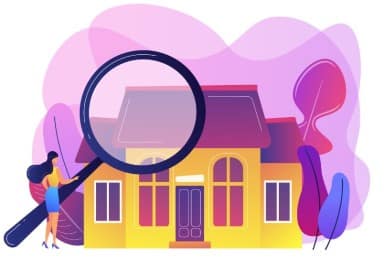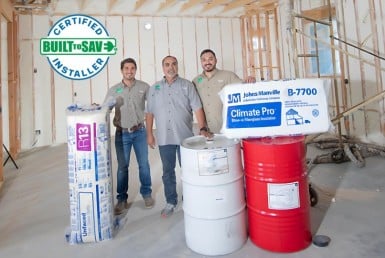10 Key Reasons to Buy a BUILT TO SAVE™ Certified Home
Imagine yourself shopping for a new car and walking onto a car lot full of cars but with no labels telling you how many miles they get to the gallon–only a salesperson telling you that they are all fuel-efficient cars. And you also have to take the salesperson’s word about what’s under the hood. Sadly, that’s how most people are forced to buy a home—not knowing if it will be energy efficient until they move in. But it doesn’t have to be that way.
If you had a choice of buying a home built to minimum code standards with no clear knowledge of its energy usage and how it was constructed OR a BUILT TO SAVE™ certified home with documented proof of its high performance from third-party raters doing inspections during construction and conducting tests after completion, your decision should be a no-brainer.
Aside from obvious savings on utilities during the life of the home, there are other, more important benefits from a BUILT TO SAVE™ certified home—and critical because they can directly affect your quality of life and comfort in your new home. Here’s what you should know.
ESSENTIAL BUILT TO SAVE™ HOME BUYER BENEFITS:
Lower Utility Bills
We all love to save money, and savings on heating and cooling costs through the BUILT TO SAVE™ program are the result of a whole-house approach to lowering utility bills. This includes everything from using a properly designed heating, ventilation, and cooling system to ensuring the home is properly sealed to create a tight envelope. Energy efficient appliances and light fixtures are also key components in a comprehensive plan for energy efficiency in this program.
• • •
Enhanced Home Comfort
Want a comfortable home? Indoor comfort is all about controlling temperature and airflow inside the home. A major component of the BUILT TO SAVE™ program is requesting builders to submit the home’s Manual J for review to make sure that the air-conditioning unit is properly sized to the space. If a unit is larger than it should be, it will cool the space too quickly and turn off before it has had a chance to remove humidity from the home, thus making it uncomfortable. As it cycles on and off, the unit will consume more electricity and will have more mechanical problems over time.
• • •
Even Room Temperatures
Nothing is worse than a living room that is cold and a bedroom that is hot. A heating and cooling system that is properly sized and has properly designed ductwork will produce the correct amount of fresh air to the home. A BUILT TO SAVE™ rater who has tested and approved the room-to-room pressure will ensure even temperatures throughout the home. If needed, the rater will require that the builder install jumper ducts to allow any excess airflow into a room to return to the air handler.
• • •
Tight Construction and Better Indoor Air Quality
If you notice dust, bugs, and smells coming in from outside your home, then it has not been sealed properly. Homes in the BUILT TO SAVE™ program are inspected during construction, before the walls are put in, to look for cracks, openings, and other areas that would allow cool air to escape to the attic or to the outside. Sealing these areas not only saves on cooling costs, it also prevents drafts, dust, and other pollutants from coming into the home. A tight, properly sealed envelope along with the proper ventilation system will ensure clean indoor air throughout the home. Blower door tests are performed that measure whole-house air leakage to make sure the home is within requirements. Duct blaster tests by the BUILT TO SAVE™ rater are also performed to measure air leakage in the ductwork.
• • •
More Durable
While materials used to build homes are more durable than ever before, the determining factor is if they are of the correct type and installed properly. This is true of everything from the foundation to the roof shingles to the mechanical systems in the home. Aside from mechanical failures, the most common threats to a home’s durability are from structural issues resulting from moisture damage. A home with an oversized cooling unit, for example, that fails to remove humidity, will create moisture issues over time. A home with improper flashing on the roof will result in serious water damage. An improperly installed house wrap and windows are a common cause of water damage. One important fact to know is that most manufacturers, like those of roofing materials that are generally guaranteed for many years, will not honor the guarantee if their products were not installed by contractors trained to install them.
• • •
Proper Insulation Installation
Here in the Rio Grande Valley, home insulation is vital. And more important than the type of insulation used is whether or not it was installed properly. For example, to function properly as insulation, batt insulation must retain its shape after it is installed. If the insulation is stuffed behind electrical wires along the walls, it no longer retains its insulation value. Spray foam, even with its superior insulation qualities, can have voids after it is applied, may not be of the correct consistency, or may have been applied while there was moisture present. The BUILT TO SAVE™ thermal inspection done by the rater is performed before drywall is installed, and is focused on ensuring that the insulation, regardless of the type, was properly installed—something that most homeowners would not be aware of.
• • •
Higher Resale Value
Who doesn’t want more money when they sell their home? Research conducted across the country has found that homes that have been certified as energy efficient command a higher resale value than non-rated homes. Additionally, the research points out that rated homes generally sell faster than non-rated homes. It makes sense that providing a certificate of high performance when trying to sell your home would be more valuable than trying to convince your buyer that you were told by the builder that the home was a high-performance home.
• • •
Compliance with Texas’ Energy Building Code
The law’s the law! On August 1, 2016, the State of Texas adopted the 2015 International Energy Conservation Code for residential and commercial construction. While local jurisdictions across the state may issue permits and pass inspections under an older energy code than the state mandated 2015 IECC, builders should be aware that they may be exposing their businesses to potential liability in the future. Homes in the BUILT TO SAVE™ program comply with the state’s 2015 IECC, regardless of what code local municipalities are enforcing.
• • •
Third-Party Inspections and Testing
Home energy raters contracted by the BUILT TO SAVE™ program are certified by either the Residential Energy Services Network (RESNET) or Building Performance Institute (BPI), independent non-profit organizations recognized throughout the nation as standard-making leaders for developing energy efficiency rating and certification systems. Independent home energy raters provide the modeling of a home’s blueprints to forecast its energy efficiency before it is built, a thermal inspection before drywall, and final testing of the home’s performance when it is completed to ensure compliance with the requirements of the BUILT TO SAVE™ program.
• • •
Peace of Mind
We can’t predict that other aspects in your life won’t give you a headache, but knowing that your new home has been certified as a high-performance home by an independent third-party home energy rater, one not affiliated with anyone connected with the construction of the home, will give you, as a BUILT TO SAVE™ homebuyer, the ultimate in satisfaction. And don’t we all want the peace of mind that comes with knowing our home has a formal certificate of energy efficiency and high performance?
• • •
BUILT TO SAVE™ is a voluntary high-performance home program for builders which certifies new homes using independent third-party home energy Raters that inspect and test homes in the program and predict their energy efficiency. These raters provide a written guarantee that the home will perform better than similar homes built to minimum code standards. You no longer have to take anyone’s word about a home’s energy efficiency. You only need to ask for proof—ask to see the BUILT TO SAVE™ CERTIFICATE or go to www.BuiltToSave.org to find out if the home was certified in the BUILT TO SAVE™ program.
Visit www.BuiltToSave.org for more information or to find a BUILT TO SAVE™ builder member.





